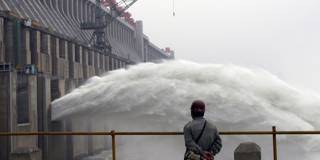Climate change is quickly reminding us that modern economies cannot function without water security, in all its varying forms. But, contrary to conventional wisdom, the best way to secure this crucial public good is to relearn past lessons, rather than to pursue radical new ideas.
LONDON – For decades, activists, scientists, and conservationists have warned that freshwater is at risk. Yet improving access to this essential natural resource remains exceedingly difficult. The 2023 United Nations Water Conference in March called for the international community to “act now with the speed and priority commensurate with the urgency of this crisis,” but it remains to be seen whether governments will follow through.

LONDON – For decades, activists, scientists, and conservationists have warned that freshwater is at risk. Yet improving access to this essential natural resource remains exceedingly difficult. The 2023 United Nations Water Conference in March called for the international community to “act now with the speed and priority commensurate with the urgency of this crisis,” but it remains to be seen whether governments will follow through.